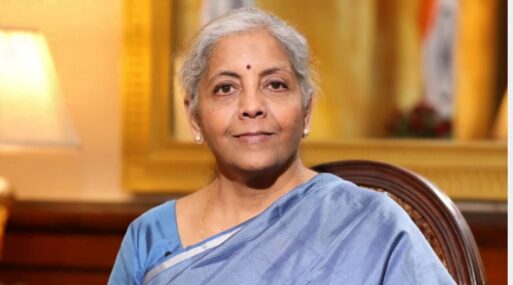Introduction: A Pivotal Economic Crossroads
As the newly elected government embarks on the formidable task of formulating this year’s budget, it is met with stark economic realities. The backdrop features an ostensibly robust 8.2% growth rate last year, a figure that belies deeper, more sobering truths. Consumer spending is languid, critical economic sectors are lagging, and the composition of growth is notably skewed. These anomalies mirror broader issues of unemployment, inflation, and inequality, all of which played pivotal roles in the recent elections, transforming a majority government into a coalition. In light of these circumstances, an active political economy response appears imminent, as suggested by various indicators.
Dissecting the Growth Mirage
The reported 8.2% GDP growth for 2023-24, following a 7% increase the previous year, is significantly inflated by substantial shifts in subsidies. This has created a pronounced discrepancy between the two principal national account measures: gross value added (GVA) and gross domestic product (GDP). The more moderate growth rates of GVA, 7% and 6.7% respectively, offer a more accurate portrayal of the economic landscape.
The stress points are starkly evident in the evolving production patterns. Last year, the composite segment encompassing trade, repair, hospitality, transport, storage, communication, and broadcasting services decelerated to half its previous growth rate. These sectors are crucial for creating informal and non-farm jobs, engaging a substantial portion of India’s semi- and unskilled workforce, including rural migrants. From the perspective of recovering from the pandemic-induced shock, which disproportionately affected these sectors and led to widespread closures of small businesses and labor redundancies, the progress made since is alarming. The combined segment has expanded by a mere 10% over the 2019-20 level, averaging a paltry 2.5% annual growth.
The Imperative of Accelerating Job-Rich Segments
This tepid growth highlights the pressing need for accelerated recovery in job-rich sectors to generate more employment. With over 90% of India’s workforce informally engaged, the swift advancement of these economic segments is critical. The recently released survey on unincorporated enterprises reveals cascading shocks dating back to 2015-16, notably the demonetization episode, which severely impacted employment generation. These effects remained unrecouped even by 2022-23.
The subdued state of consumption expenditure, despite the brisk sales of high-end homes and vehicles, underscores the segmented nature of the economy. Population groups with higher consumption propensities are vital for generating the demand necessary for manufacturers to expand production capacities. However, firms are prioritizing profit margins over volume growth, catering to a limited set of unaffected consumers, as evidenced by their pricing strategies.
The Question of Policy Reorientation
The critical question facing budget-makers is whether policy responses require reorientation or at least supplementation of supply-side capital expenditure (capex). The persistent inflation, particularly in food prices, has suppressed real rural wages, which have contracted for nearly two years. This consumer stress indicates that the broad policy objective of public spending on infrastructure—to encourage private investments, create jobs, and boost incomes sustainably—is not being met. Thus, policy responses may need to be more innovative, direct, and extend beyond public capex and provisions like free food grains.
Indications of Policy Shifts
There are signs that the government is cognizant of the financial pressures on lower-income households. For instance, the new cabinet’s first decision was a significant expansion of an existing housing assistance scheme, aiming to build 30 million additional homes for the rural and urban poor. This move underscores a commitment to inclusive growth and social welfare. Additionally, news reports suggest that budgetary considerations may include tax cuts for lower-income groups to revive consumer spending, alongside targeted assistance to small and medium-sized enterprises (SMEs) and labor-intensive industries.
The Political Economy Dimension
In this context, the political economy is highly relevant. Given the patchy economic recovery, a shift or modification in policy direction is essential to revive spending, which is a prerequisite for renewed private investment. The pressure on public finances has been alleviated somewhat by the fiscal windfall from the central bank, which approved a substantial Rs 2.11 trillion dividend payout to the government last month. This development may reassure investors concerned about populist pressures from a coalition government, indicating that fiscal metrics will remain stable while planned corrections to public balances will proceed.
Conclusion: A Balanced Approach
Addressing the economic tensions overwhelming a large segment of vulnerable households is both necessary and achievable without compromising fiscal stability. The budget must reflect a balanced approach that prioritizes the revival of consumer spending, supports SMEs, and ensures the equitable distribution of economic growth. Only through such decisive and holistic measures can India navigate its economic crossroads and chart a course towards sustainable and inclusive prosperity.
Summary Table:
| Key Learning Points |
|---|
| Economic growth figures can be misleading. |
| Consumer spending and employment are critical issues. |
| Informal sectors and SMEs need targeted support. |
| Policy reorientation is essential for sustainable growth. |
| Political economy influences budgetary decisions. |
Advanced Vocabulary:
| Vocabulary | Meaning |
|---|---|
| Conflagration | An extensive fire that destroys a great deal of land or property. |
| Capex | Capital expenditure, money spent by a business on physical assets. |
| Ameliorate | To make something better or less severe. |
| Cognizance | Awareness or knowledge of something. |
| Paltry | Insignificant; meager. |
| Tenuous | Very weak or slight. |
| Reorientation | The act of changing the focus or direction of something. |
| Fiscal Windfall | Unexpected financial gain. |
| Fiscal Metrics | Financial measures used to assess economic performance. |
| Subdued | Quiet and reflective; depressed. |

Sunil Garnayak is an expert in Indian news with extensive knowledge of the nation’s political, social, and economic landscape and international relations. With years of experience in journalism, Sunil delivers in-depth analysis and accurate reporting that keeps readers informed about the latest developments in India. His commitment to factual accuracy and nuanced storytelling ensures that his articles provide valuable insights into the country’s most pressing issues.



